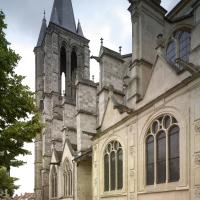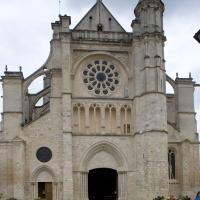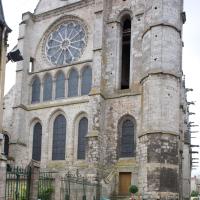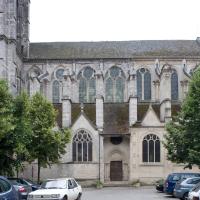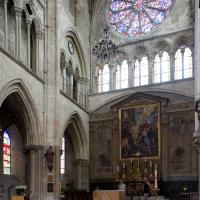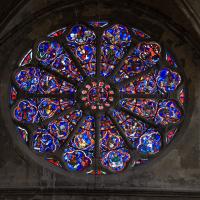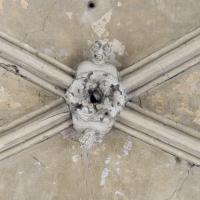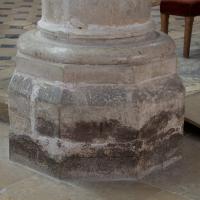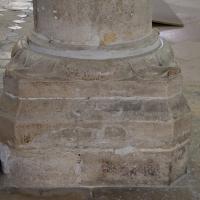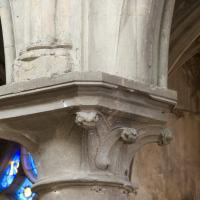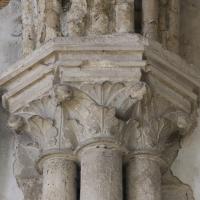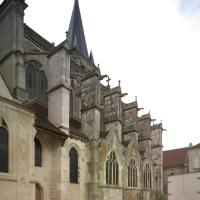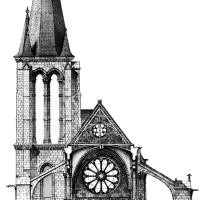Images
VR Tour
Notes
Date
Begun ca. 1200
Plan
An aisled basilica of eight bays with no transept and a chevet plat.
Elevation
Three stories with a columnar
Chronology
Construction started in the north-east corner of the building under the initiative of Robert II of Dreux, with the work continuing through the 13th-century. The choir was the completed in early 13th century. The cylindrical columns and tall clerestory windows of the nave reflect the Parisian forms of Notre-Dame.The middle level has a tall triforium with plate tracery of quatrefoils surmounts to tri-lobed lancets (c. 1230s) reflects prototypes in and around Paris such as Saint-Séverin. The structure also points to the work of Hugues Libergier, in his work of Saint-Niçaise at Reims. Some of the slender cylindrical columns of the nave arcade failed and were replaced towards 1530 with units in the style of Pierre Chambiges. During the 17th-century considerable amounts of the superstructure where replaced.
Significance
For Robert Branner Brie-Comte-Robert is a sign of the outward spread from Paris of the Louis IX's court style. Alternatively the use of Parisian forms can be seen as the eyes of the architects and patrons looking inward to Paris and appropriating forms.
Location
Bibliography
Bony, Jean, French Gothic Architecture of the 12th and 13th Centuries, University of California Press, Berkeley, p. 327 fig. 302., 1983
Bougault, Valerie, "La restauration des vitraux anciens," Connaissance Des Arts, 1980 (617):106-109, 2004
Branner, Robert, St. Louis and the Court Style in Gothic Architecture, London, 1965, 34 Michel, Edmond, Histoire de la ville de Brie-Comte Robert, Paris, 1902
Savary, Jean, and Jean-Jacques Hyest. 2005. L'eglise Saint-Etienne de Brie-Comte-Robert, Seine-et-Marne.
Schelstraete, Jean, Lumieres de la Brie: 3eme partie. Monuments Et Sites De Seine Et Marne. (26):27-44, 1995






